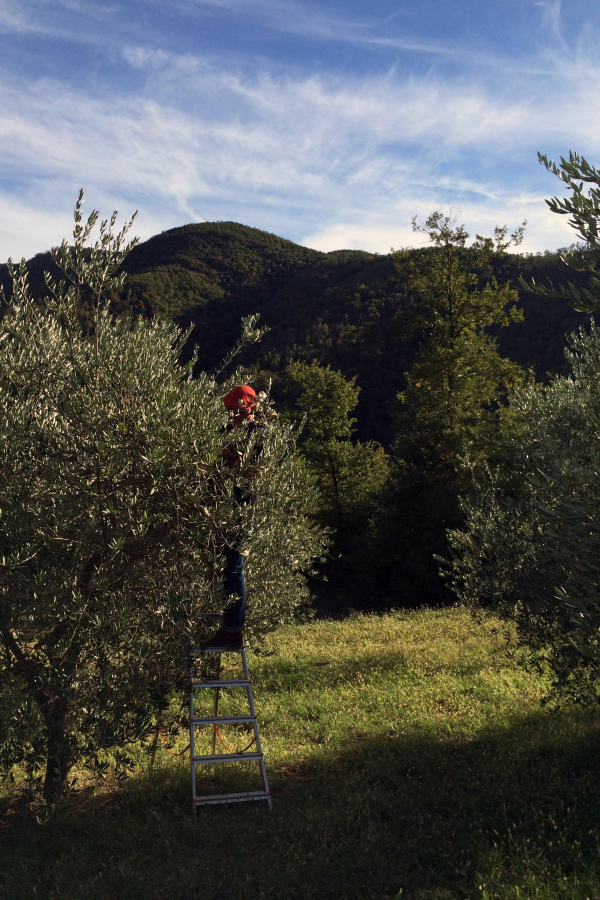The fragrance of brand-new olive oil is unmistakable. If you’ve ever experienced it, you’ll recognize it instantly ever after. When the oil is fresh from the press, it’s as intense and all-pervasive as the aroma of white truffles, as penetrating as that of fir balsam, as seductive as the smell of June roses lingering in the nose for days after the blooms themselves have faded.
The best time and place to experience that extraordinary perfume in its fullest impact is at the olive mill — the frantoio, as it’s called in Italy — at the moment newly harvested olives are crushed into oil. Second best is a bottle of fresh, new-season oil, coming into U.S. markets in February and March — i.e., right now — from Italy, Spain, Greece and, to a lesser extent, France, California and other parts of the olive oil world.
Describing that fragrance to those who don’t know it is another matter. It’s a little green-fruity, like the olives themselves that, ideally, are not fully ripened but just on the verge. It’s the smell of freshly cut grass. Or of tomato leaves crushed between the fingers. Perhaps it’s a little nutty (almonds? hazelnuts?) or a little citrusy (lemon maybe?), or it has a little fragrance of green apples, or maybe apricots? It’s a complex aroma, for sure, and all that complexity makes up a large part of the oil’s flavor as well. So if the aroma of the extra-virgin in your pantry doesn’t reflect that complexity, the flavor won’t, either, and it’s a good time to reinvest.
I know this because I experience that aroma and flavor every year in October, when I go back with family and friends to harvest olives and make oil on what we cheerfully call the family estate in Tuscany. Don’t, please, imagine a centuries-old villa in a park of cypresses with faithful retainers in attendance and generations of family portraits in the hall. Ours is an old stone farmhouse, somewhat ineptly restored, on 25 acres of steep, rocky land in the forested mountains between Tuscany and Umbria, a mile or so down a dusty cart track from a poorly maintained local highway and a hamlet that consists of a church, a shuttered community building and a shop that is sometimes open but more often not. Oh, and the farmhouse roof leaks.



